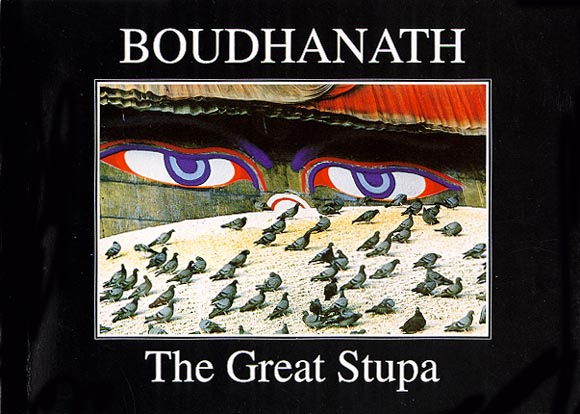History of Boudhanath: The Chini Lamas
Recent history of the Stupa has revolved around the
lineage of the Chini (or Chiniya) Lamas. The first Chini Lama, Taipo Shing, was a
Szeshuanese Nyingmapa Buddhist who settled in Boudha after coming here on pilgrimage. In
1853, at the conclusion of the Sino-Gorkhali war, Jung Bahadur invited his Chinese
resident of Boudha to the palace to interpret during the peace discussions. In recognition
of his services to the Rana prime minister, in 1859 he was awarded the abbotship of Boudha
with its stewardship of the guthi lands of Malemchi in Helembu. He was succeeded by
Buddha Vajra in 1880 and Punya Vajra (1886-1982), the Third Chini Lama, succeeded him in
1922. The spiritual and temporal power of the Second and Third Chini Lamas increased,
until during the Late Rana period Boudha had become a kingdom within a kingdom. The
authority of the Chini Lamas was enhanced by their status as consul of the Dalai Lamas to
the Kingdom of Nepal.
The Chini Lama's power was diminished
by the Chinese occupation of Tibet in 1951, by the Nepali land reform of 1961, which
stripped the Stupa of much of its supporting lands, and also by the Panchayat domination
from which Punya Vajra, the Third Chini Lama, stood apart. By the time of Punya Vajra's
death in 1982 the abbot of Boudha's power had been radically curtailed. As Nyingmapa
yogins, the Chini Lamas had taken Tamang and Sherpa girls as their consorts. The first
Chini Lama married the daughter of one of Jung Bahadur's concubines, thus initiating
family ties with Government. The Third Chini Lama's long life and virility resulted in a
prolific extension of the family. From the mid-19th century until the death of Punya
Vajra, it was the Chini Lamas of Boudha who contributed most to the continuing religious
and social significance of Boudhanath.
As abbots of Boudha the Chini Lamas
were the heads of the Tamang sangha and the Boudha Gyang Guthi, the Boudha
Monastery Society. This guthi of local devotees of the Stupa comprises the
administrative body maintaining the Stupa and also the priests tending Ma Ajima, the
Protecting Goddess. The members of the guthi were, and still are, disciples of the Chini
Lamas (Tibetan: Gya Lama) in the Tibetan tradition. Guthi lands, lying principally in
Malemchi Gaon in Helembu and around Kopan, were the main source of finance for this guthi.
The Newars also have rights of worship at the temple of Ma Ajima. The historical
relationship of the Buddhist guthi to the Hindus is obscure, but we do know that during
the abbotship of the Third Chini Lama blood-sacrifice to Ma Ajima - alluded to by Shabkar
Rinpoche - was discontinued. Since the death of the Third Chini Lama, in a temporal and
spiritual power vacuum, the Stupa has been governed by a guthi committee consisting of
lineal descendants of the Third Chini Lama and the families of his Tamang disciples who
live in the vicinity. The Newar presence in Boudha is limited to silver-smiths and traders
from Patan taking advantage of the pilgrim and tourist market.
Click here The Legend of
the Great Stupa for the chapter of the legend predicting the portents of ruin of
the Stupa.

